#Convex lens experiment
Explore tagged Tumblr posts
Text
Experiment: To Determine the Focal Length of a Convex lens by Plotting Graphs Between u and v and 1/u and 1/v
Focal length of a convex lens: Objective To find the focal length of a convex lens using the lens formula by plotting u and v graph 1/u and 1/v graph Focal length of a convex lens: Apparatus and Material Required Convex lens (let’s assume f=10 cm) Optical bench with 3 uprights (with clamps) Optic needles Meter scale Spirit level Focal length of a convex lens: Ray Diagram Focal length of a convex…
#1/u vs 1/v graph#CBSE PHYSICS#CBSE/ICSE physics practical#Convex lens#Convex lens experiment#Focal length#Focal length determination#Lens formula experiment#lens properties#Optics experiment#Optics lab experiment#PHYSICS PRACTICAL#Ray optics#Ray optics experiment#Science lab projects#u-v graph method
0 notes
Text
̲𝚄̲̲𝚗̲̲𝚒̲̲𝚟̲̲𝚎̲̲𝚛̲̲𝚜̲̲𝚊̲̲𝚕̲ ̲𝙸̲̲𝚗̲̲𝚎̲̲𝚚̲̲𝚞̲̲𝚊̲̲𝚕̲̲𝚒̲̲𝚝̲̲𝚒̲̲𝚎̲̲𝚜̲
Jensen’s Inequality:
If φ is a convex function and X is a random variable, then:
φ(E[X]) ≤ E[φ(X])
⸻
- Mathematically:
It formalizes the idea that the function of an average is less than or equal to the average of the function—a cornerstone in information theory, economics, and entropy models.
- Philosophically:
It encodes a deep truth about aggregation vs individuality:
The average path does not capture the richness of individual variation.
You can’t just compress people, ideas, or experiences into a mean and expect to preserve their depth.
- Theologically (Logos lens):
God doesn’t save averages. He saves individuals.
Jensen’s Inequality reminds us: truth emerges not from flattening, but from preserving the shape of each curve.
Cauchy-Schwarz Inequality:
|⟨u, v⟩| ≤ ||u|| · ||v||
- Meaning:
The inner product (projection) of two vectors is always less than or equal to the product of their lengths.
- Why it matters metaphysically:
No interaction (⟨u,v⟩) can exceed the potential of its participants (||u||, ||v||).
Perfect alignment (equality) happens only when one vector is a scalar multiple of the other—i.e., they share direction.
- Philosophical resonance:
Love (inner product) can never exceed the strength of self and other—unless they are one in direction.
⸻
Triangle Inequality
||x + y|| ≤ ||x|| + ||y||
- Meaning:
The shortest path between two points is not through combining detours.
- Metaphysical translation:
Every time you try to shortcut wholeness by adding parts, you risk increasing the distance.
Truth is straight. But sin adds loops.
This is why grace cuts cleanly—it does not add noise.
⸻
Entropic Inequality (Data Processing Inequality):
I(X; Y) ≥ I(f(X); Y)
- Meaning:
You can’t increase information about a variable by processing it. Filtering always loses some signal.
- Deep translation:
Every time you mediate the truth through an agenda, a platform, or an ego, you lose information.
This is a law of entropy and a law of theology.
“Now we see through a glass, darkly…”
—1 Corinthians 13:12
Only unfiltered presence (Logos) sees all.
⸻
Christic Inequality (Cruciform Principle):
Here’s a theological-metaphysical inequality you won’t find in a textbook:
Power - Sacrifice ≤ 0
(unless crucified)
- Meaning:
Power without self-giving always decays into corruption.
Only when power is poured out (Philippians 2:6–8) does it become greater than itself.
So paradoxically:
True Power = Power · (Sacrifice > 0)
8 notes
·
View notes
Video
youtube
CM6612 H1 LED Fog Lights
CM6612 H1 LED Fog Lights
1. Increase Night Visibility: High-quality CM6612 H1 LED bulbs, each 48W, with a color temperature of 6000K, equipped with 12 advanced LED chips to achieve 360° illumination. The convex lens projects the light farther and forms a focused beam—no dark spots, no shadows—providing wider and clearer visibility to ensure safe and comfortable driving.
2. Safe Beam Pattern: Applied the same beam design as the original high or low forward light bulbs, the ultra-thin LED chip interval provides a wider angle and farther range of light on the road. No blinding or dazzling oncoming drivers, ensuring a safe driving experience.
4 notes
·
View notes
Text
Black Hole and Cosmic Lensing

Once in my early youth, I watched a sci-fi movie about space travel that supposedly featured a black hole. It resembled a galaxy, which I found quite amusing—how can you see a black hole if no light can escape from it? Much later, I realized that although the depiction in the movie wasn't accurate, and yes, we certainly can't see the black hole itself, there are still many fascinating phenomena around it that can be observed. So, what exactly can we observe?
First, imagine Saturn with its majestic rings. Then, imagine this Saturn turning black, becoming invisible—and you'll get the picture. There are luminous rings rotating around something that, in reality, we cannot see. But it's definitely there. These rings, or more accurately, the matter drawn in by the black hole, spin at tremendous speeds and are located in the equatorial plane—just as in any galaxy formed around any massive celestial body. Unlike the tranquil, icy rings leisurely circling our native gas giant Saturn, this matter is accelerated to nearly the speed of light. It may be dense and heated near this celestial body and becomes more sparse and slower farther away. Another way to visualize it is like a whirlpool, only much faster.
But in the picture (below), it doesn't quite resemble rings. It looks more like a strange, faceless smiley wearing a hat, reminiscent of what some viewers might have seen in the movie 'Interstellar.' The reason is that space is distorted so much, so what lies behind this celestial body appears partially above and partially below it. The image seems almost turned inside out. Thus, the depiction is akin to Saturn's rings, if they were reflected in a curved mirror, or more accurately, viewed through a powerful lens.
I highly recommend clicking on the link on the video (below) to see it in action - it's absolutely spectacular!
youtube
Also, if you haven't seen the movie 'Interstellar,' I strongly suggest watching it. A group of scientists, including Kip Thorne, participated in its production. Thorne even wrote a book titled 'The Science of Interstellar' with scientific explanations. He explains how the film crew aimed to create images and visualizations as close as possible to what is actually known in science, or at least to use real scientific hypotheses. For the visualization of the black hole, they employed real scientific models, and the visuals were based on the latest scientific understanding. This approach was validated by the recent actual photograph of a black hole.
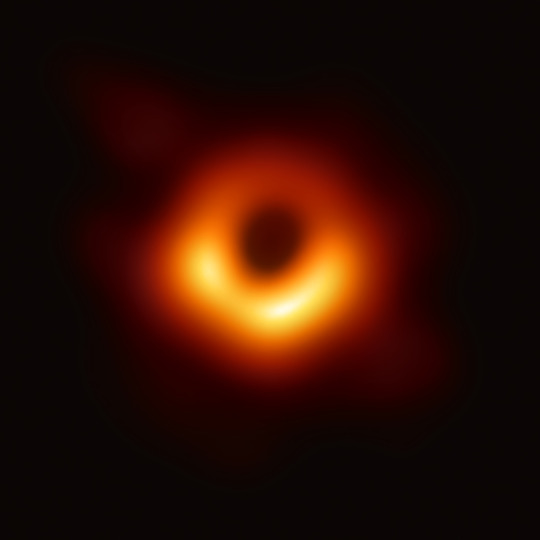
In this visualization (below), it’s easy to observe dynamically why the rings around a black hole take on such a peculiar shape. The image displays a computer model showing how a black hole would appear if it passed in front of a distant galaxy. Note that the galaxy itself remains unaffected; it is far away, and nothing is happening to it. It's just the image of the galaxy that changes - it resembles what you would see if you took a thick, convex lens and moved it across the backdrop of that same galaxy or a simple geometric pattern. If you have such a lens or a glass sphere, try this experiment. It’s a straightforward way to help understand this phenomenon

So, the biggest difficulty in understanding is that the picture appears static to us. As soon as you see it in motion, there's a moment of recognition of the phenomenon, and then it's no longer a problem to understand why you see rings both around the shadow of the black hole and above and below it.
Furthermore, the ability to view images dynamically also facilitates the discovery of new black holes. When astronomers notice that an entire sector of a previously familiar scene begins behaving strangely — with stars moving erratically or stretching into curved lines, and the image becoming blurred — it strongly indicates the presence of an invisible object traveling between us and this background scene, distorting the image. But we'll discuss this in more detail next time. Stay tuned!
#space#universe#physics#black holes#cosmos#science#astronomy#gravitational lensing#visualization#interstellar#Youtube
6 notes
·
View notes
Text
truly the internet has deadened all of our senses and experiences, even the relatable horror of the darkness and rage that lives in all mankind can only be expressed through the vaguest of generalities and emoticons in order to pass through algorithmic censors and gain widespread readership. the stickman pleads to be heard but the deepness of his pain can only be intimated through the convex lens of approval by our unseen moderators and tech godheads
ohhhh ok your having a hard time with some vague feelings? oh and its like this stickman covered in blood. thats nice dear
43K notes
·
View notes
Text
Eye Defects and Their Corrections | Ophthalmologist in Nigeria
Our eyes are among the most vital organs in the human body. They enable us to see, perceive colors, recognize faces, and navigate the world around us. However, like any other part of the body, the eyes can experience functional issues known as eye defects. These defects affect the clarity of vision and, if left untreated, may reduce quality of life.
In this blog, we will explore the most common eye defects and their corrections, while also discussing the essential role of an ophthalmologist in Nigeria in diagnosing and managing these conditions effectively.
What Are Eye Defects?
Eye defects, also called refractive errors or visual impairments, are conditions that affect how light enters and focuses on the retina, leading to blurred or distorted vision. These defects may be congenital (present at birth) or develop over time due to aging, health conditions, or environmental factors.
Common Types of Eye Defects
1. Myopia (Nearsightedness)
Definition: A condition where close objects are seen clearly, but distant objects appear blurry.
Cause: The eyeball is too long, or the cornea is too curved, causing light rays to focus in front of the retina.
Correction:
Concave (minus) lenses in glasses or contact lenses
Laser eye surgery (LASIK)
Orthokeratology lenses (worn overnight to reshape the cornea)
2. Hyperopia (Farsightedness)
Definition: A condition where distant objects are clear, but nearby objects are blurry.
Cause: The eyeball is too short or the cornea has too little curvature, causing light to focus behind the retina.
Correction:
Convex (plus) lenses
Contact lenses
Refractive surgery options like LASIK or LASEK
3. Astigmatism
Definition: A defect where the eye does not focus light evenly on the retina, leading to blurred or distorted vision at all distances.
Cause: Irregular shape of the cornea or lens.
Correction:
Cylindrical lenses in glasses or toric contact lenses
Laser eye correction surgery
4. Presbyopia
Definition: Age-related loss of the eye’s ability to focus on close objects, typically noticeable after age 40.
Cause: The lens loses elasticity over time.
Correction:
Reading glasses
Bifocal or multifocal lenses
PresbyLASIK or lens replacement surgery
5. Color Blindness
Definition: Inability to distinguish between certain colors, usually red and green.
Cause: Inherited condition; rarely acquired from injury or disease.
Correction:
No permanent cure
Color-corrective lenses or filters may help in some cases
6. Amblyopia (Lazy Eye)
Definition: A condition where one eye has reduced vision because it and the brain are not working together properly.
Cause: Strabismus (eye misalignment), refractive errors, or obstruction of vision during early childhood.
Correction:
Eye patches or eye drops to strengthen the weaker eye
Vision therapy
Surgery in severe cases
7. Strabismus (Crossed Eyes)
Definition: Misalignment of the eyes, where they don’t look in the same direction at the same time.
Cause: Muscle imbalance, nerve injury, or congenital condition.
Correction:
Eyeglasses
Prism lenses
Vision therapy
Eye muscle surgery
Role of an Ophthalmologist in Nigeria
An ophthalmologist in Nigeria plays a critical role in diagnosing and correcting all types of eye defects. These are highly trained medical doctors who specialize in eye and vision care, including surgery and disease management.
Services Offered:
Comprehensive eye exams
Diagnosis of eye defects and diseases
Prescription for glasses or contact lenses
Laser treatments and surgeries
Glaucoma, cataract, and retina disease management
Many Nigerian ophthalmologists work in both public and private eye hospitals, making care accessible across cities like Lagos, Abuja, Port Harcourt, and Kaduna.
How Are Eye Defects Diagnosed?
During a visit to an ophthalmologist, you may undergo:
Visual acuity tests (eye charts)
Retinoscopy and refraction tests
Tonometry (measuring eye pressure)
Slit-lamp examination
Retinal imaging for deeper issues
Early diagnosis is crucial for timely treatment and correction.
.
Cost of Eye Defect Correction in Nigeria
Correction Method
Estimated Cost (₦)
Prescription Glasses
₦10,000 – ₦50,000
Contact Lenses
₦15,000 – ₦40,000/year
LASIK/Refractive Surgery
₦200,000 – ₦500,000+
Strabismus Surgery
₦150,000 – ₦300,000
Note: Prices vary based on hospital, city, and severity.
Tips for Maintaining Eye Health
Get annual eye exams, even without symptoms.
Use anti-glare screens and reduce screen time.
Wear sunglasses to protect from UV rays.
Maintain a balanced diet rich in Vitamin A and omega-3 fatty acids.
Avoid self-medicating eye conditions.
Conclusion
Understanding eye defects and their corrections is the first step toward protecting your vision. Whether you're dealing with common conditions like myopia or more complex issues like strabismus or lazy eye, early diagnosis and professional care are crucial.
If you're in Nigeria, consulting a licensed ophthalmologist in Nigeria ensures you receive accurate diagnosis, effective correction, and long-term vision care. Your eyes are precious—don’t wait for symptoms to get worse. Schedule an eye exam today!
0 notes
Text
gratuitously populating the c. 2050bby landscape of jedi academics:
The next document has an abstract at the top. ‘A Proposal for the Classification of Force Planes’ is an actual journal article written nearly two millennia ago by a Knight Zona Willum on out-of-body experiences. I read further on, my skepticism rising at the mention of inducement by specific Felucian fungi. This one might just be a drug trip disguised as a short monograph on the different worlds one can access through the Force. [...] Zona Willum’s proposal concludes while the document still has several pages left. I press on the datapad screen and it loads the next screen unit—bibliography. Do you really need a bibliography if the main source is yourself? Apparently, yes. You just end up citing your own journal entries and it’s very short. The next screen unit begins with a header reading ‘On the Meanings of Reality: A Response to Willum’. It’s the best thing in the universe: academic scuffling. I kick my feet in glee. My toes swing too close to the repulsion field and I yank them back up onto the bench with the rest of me, away from the prickling, tickling sensation that a swarm of bees have decided my ankle was actually a flower that they should land on. The only response is to have a whole-body shudder, overwhelm the little shivers with one big one, and them and myself out. I don’t move my eyes from the Best Thing in the Universe the whole time. Master Jela Ven argues that Knight Willum’s data is poor, utterly subjective, and does not belong in the annals of Meditations on the Force. She contents that reality nor the Force are made up of different realms. There exist levels, different places on a spectrum like infrared or ultraviolet, except metaphysical. I restrict my movement to a single foot now, moving it in ellipses now, the pattern of a magnifying glass seen from the side. A convex lens to focus through, circles squashed or tilted almost flat. According to Master Nika-Ton, both Willum and Ven are a prime example of the dogmatic schisms happening in the wake of events that aren’t identified as anything other than ‘current’. The Master goes on to explain, at length, the difference between the spirit realm of the Dathomiri and hyperspace, which Willum’s argument posits are equivalents. The final commentary is a mere paragraph by someone named Phanius stating that nothing is truly real but the Force and this is all an illusion that the majority of people have yet to break through.
i'd like to personally thank the journal culture & tradition, published by the folklore students of memorial university of newfoundland, specifically volume 22 from the year 2000, with its chronicle of the 2001 roundtable discussion of the state of folklore studies in canada and the many replies generated.
#keeping up with the skywalkers#galaxies far far away may be closer than they appear#(only one of these is an actual name drop)
1 note
·
View note
Text
From Clarity to Couture: The Timeless Journey of Eyeglasses
Eyeglasses have become so seamlessly woven into our daily lives that it’s easy to overlook the incredible journey behind these lenses. What we now take for granted as essential tools or trendy accessories started as rudimentary objects intended merely to aid vision. Their transformation over time is a fascinating story of human ingenuity, cultural shifts, and evolving fashion sensibilities. From ancient solutions for blurry sight to the digital-age smart glasses we’re beginning to see, the history of eyeglasses blends science with style.
The Earliest Attempts to Improve Sight
Long before modern lenses and sleek frames, ancient civilizations were already experimenting with ways to magnify objects. While they didn’t have what we’d recognize as eyeglasses, early people did find rudimentary ways to enhance vision. Scholars and artisans used polished crystal or glass to enlarge texts in ancient Egypt and Rome. These objects were simple magnifiers, placed directly on the material they read.
Some accounts even suggest using water-filled glass bowls or globes, which bent light and helped enlarge images. The Roman philosopher Seneca is said to have observed the magnifying effect of a water globe on text, and Emperor Nero reportedly used polished emeralds as a visual aid. However, it may have been more to shield from sunlight than to enhance clarity. These early practices laid the foundation for what would later become a sophisticated optical science.
Eyeglasses Emerge in Medieval Europe
The concept of wearable eyeglasses began in medieval Europe during the late 13th Century. Historians often point to Italy, particularly cities like Pisa or Venice, as the birthplace of the first spectacles. Crafted with convex lenses, these early glasses were designed for farsighted people, allowing them to read and see nearby objects more clearly.
These primitive spectacles lacked the arms we associate with modern glasses. Instead, they were either handheld or balanced precariously on the bridge of the nose. Early users included monks, scholars, and scribes—those whose daily lives demanded prolonged periods of reading or writing. The invention of the printing press in the mid-15th Century further spurred demand, making reading materials more widely available and increasing the need for vision correction.
Scientific Discovery Fuels Optical Innovation
As the Renaissance unfolded, interest in the sciences soared, and optics became a subject of serious study. Vision correction moved from basic convex lenses to more specialized types. In the 17th Century, concave lenses were introduced to help those with nearsightedness, expanding the utility of eyeglasses to a broader range of people.
The 18th Century saw a significant leap in innovation with the invention of bifocals, credited to Benjamin Franklin. These lenses combined two prescriptions, helping people see near and far without switching glasses. Around the same time, spectacles also became more comfortable. Instead of balancing on the nose or being tied with a string, glasses began to include side arms, or “temples,” that rested on the ears—an essential step toward modern eyewear design.
As optical science matured, the accuracy and quality of lenses significantly improved. The 19th Century introduced a range of lens powers and the concept of astigmatism correction. With industrialization came mass production, which meant eyeglasses became more affordable and accessible to people of different social classes.
The Fusion of Function and Style in the 20th Century
By the early 20th Century, eyeglasses were no longer limited to practical use—they began to develop as fashion items. As more people incorporated them into everyday life, the design and aesthetic of frames took on greater significance. Plastic frames entered the scene, enabling a variety of styles, colors, and shapes.
The mid-century brought iconic looks that helped elevate eyeglasses into the world of popular culture. Celebrities and public figures began proudly wearing glasses, changing the perception of them from nerdy or utilitarian to stylish and even glamorous. The cat-eye frames of the 1950s, Buddy Holly's bold black rims, and John Lennon's round glasses all contributed to this new narrative.
In addition to their growing fashion appeal, eyeglasses benefited from technological innovations. Anti-glare coatings, UV protection, and photochromic lenses that darken in sunlight made glasses more practical and protective. Prescription sunglasses also gained popularity, offering a two-in-one solution for people needing vision correction and sun protection.
A Digital World Demands a New Kind of Eyewear
As the 21st Century ushered in an era dominated by screens and digital devices, our relationship with eyewear adapted again. A new concern emerged: digital eye strain. Long hours in front of computers and smartphones prompted the development of blue light filtering lenses designed to ease eye fatigue and reduce the long-term effects of screen exposure.
Meanwhile, the design world embraced glasses like never before. Eyewear became a vehicle for self-expression, with designers and brands launching signature frames that ranged from minimalist to avant-garde. Fashion houses such as Gucci, Prada, and Versace began producing high-end eyewear, and celebrities helped popularize distinctive trends. What once was a necessity has now become an accessory to complete an outfit, signal a lifestyle, or express individuality.
Technology also changed how people shopped for glasses. Online retailers introduced virtual try-on tools, allowing users to see how frames looked on their faces using their smartphone or computer. The convenience of ordering custom prescription glasses online, often at lower prices than traditional optical shops, has dramatically expanded access to stylish eyewear.
What’s Next: Smart Glasses and Sustainability
The next chapter in the story of eyeglasses is already being written, and it includes cutting-edge technology and a growing emphasis on sustainability. Tech companies are investing in smart glasses that integrate augmented reality, voice commands, and even health tracking into everyday eyewear. These devices blur the line between vision correction and wearable technology, potentially reshaping how we interact with the digital world.
At the same time, there’s increasing awareness about environmental issues in the eyewear industry. Sustainable materials, including recycled plastics and biodegradable acetate, are becoming more common in frame production. Some companies are exploring closed-loop manufacturing processes, where old frames can be returned and repurposed into new ones. Consumers, especially younger generations, strongly prefer eco-conscious brands that align with their values.
Customization is another exciting frontier. Advances in 3D printing and artificial intelligence now allow eyewear to be tailored to vision needs and individual face shapes and preferences. This level of personalization means that glasses can offer better fit, improved comfort, and more unique style options than ever before.
A Lens Into the Future
The story of eyeglasses is far more than just a tale of seeing better. It reflects human creativity, technological progress, and changing cultural values. From ancient magnifying crystals to futuristic smart glasses, the evolution of eyewear speaks to our enduring need for clarity, both in sight and self-expression. Today, glasses are worn not just to see the world, but to show the world who we are. As science and fashion continue to shape their future, one thing remains clear: eyeglasses will always be a powerful symbol of innovation and identity.
0 notes
Text
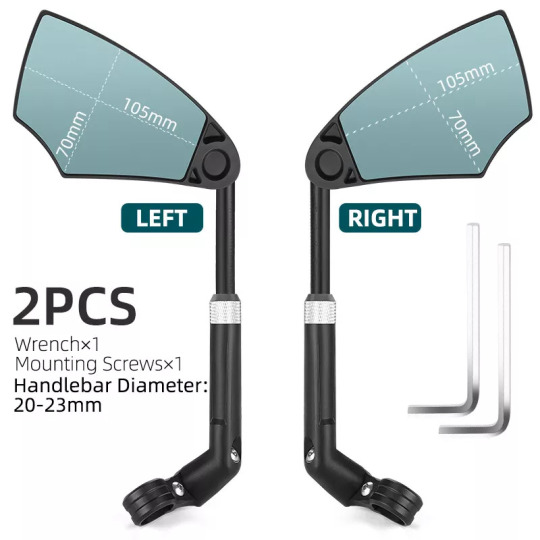
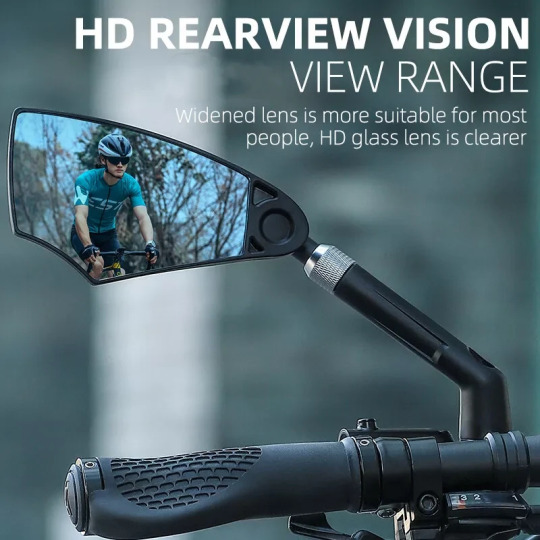
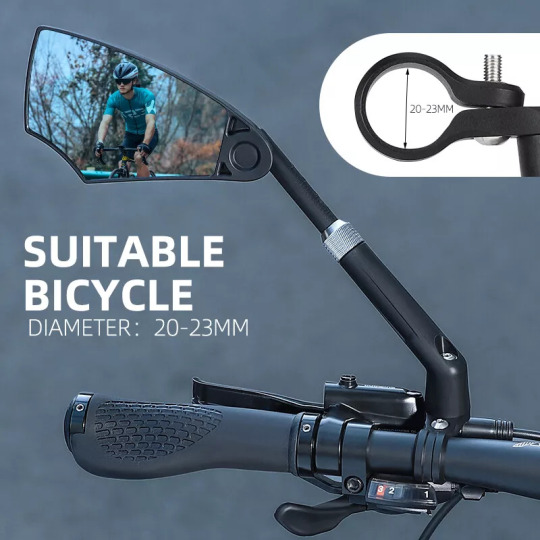
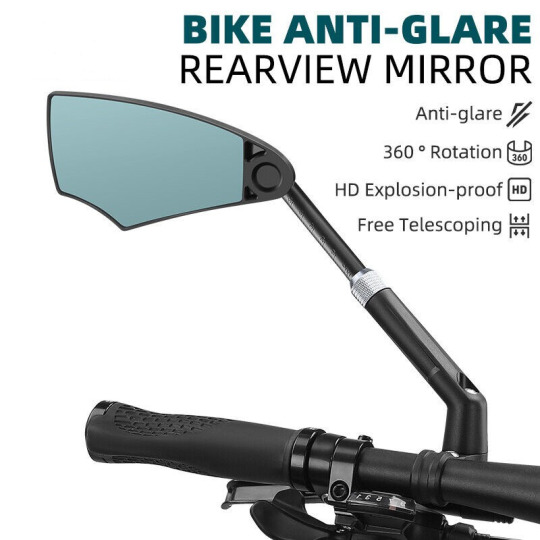
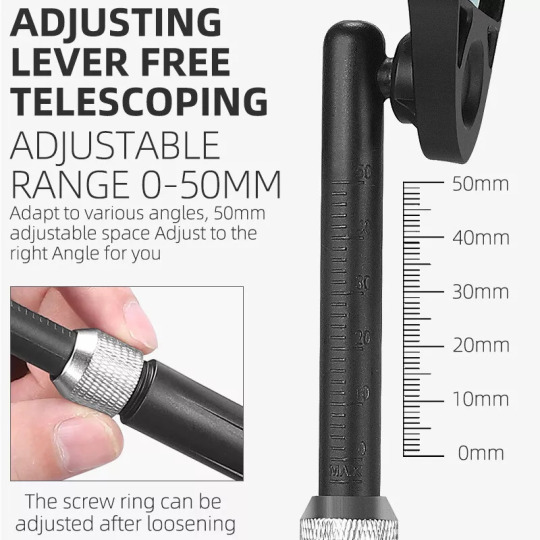
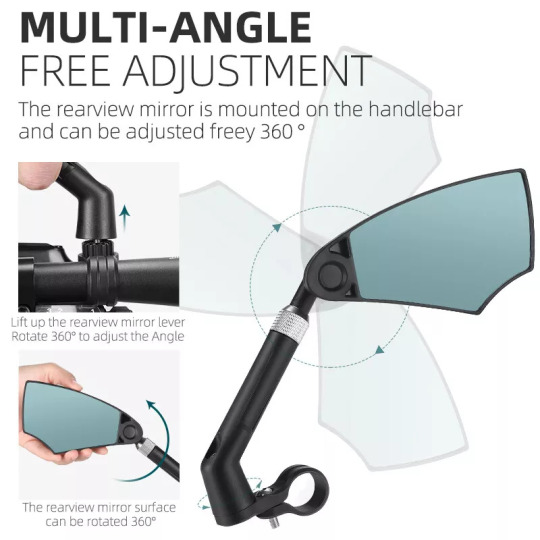

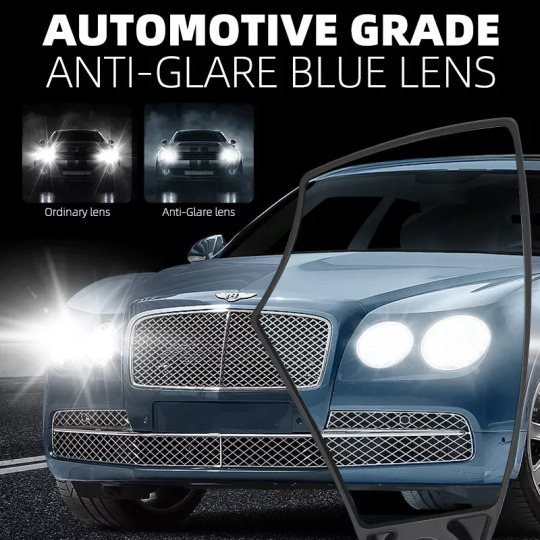
🔍Enhance your safety and visibility with our 360° Adjustable & Telescopic Bike Mirror. Engineered for every adventure, this mirror offers a crystal-clear, wide-angle view through its distortion-free convex lens, ensuring you never miss a detail on the road. 🌦️ Reliable in All Conditions: With shock absorption and weather resistance, it maintains flawless visibility through bumps, rain, or sudden stops. The auto-adjusting pivot guard protects your mirror and gear during falls. 🔧 Effortless Installation & Universal Fit: Compatible with 20-23mm handlebars, this mirror is perfect for e-bikes, mountain bikes, scooters, and more. Install in minutes with the included hex tool and customize the telescopic arm for your perfect view. 🚵♀️ Built for Every Adventure: Made from ultra-durable PA+PP materials, it resists corrosion and UV damage. Easily fold it flat when parking or navigating tight spaces, then snap it back into action for your ride.Upgrade your cycling experience—order your Cycling Best Handlebar Bike Mirror today, because safety shouldn’t wait!👉 Shop Now:https://cyclingbest.com/products/cycling-best-handlebar-bike-mirror-20-23mm-360%C2%B0-adjustable-telescopic-rearview-for-safer-rides
0 notes
Text
Price: [price_with_discount] (as of [price_update_date] - Details) [ad_1] bike mirror Enhanced Safety on the Road: Gain confidence with our bicycle mirror featuring an HD convex mirror and wide-angle lens that provide a clear, comprehensive view of the road behind, ensuring safer lane changes and confident traffic navigation 360° Customizable Viewing: Experience complete flexibility with our bike mirrors adaptable support bar and rotatable base, allowing you to personalize your viewing angle for heightened situational awareness, enhancing safety while cycling. Easy Installation and Universal Fit: Easily install our bike mirror handlebar mount without tools using the thumb screw and included rubber gaskets. Designed to securely fit handlebar diameters ranging from 0.87 to 1.26 inches, it's ideal for mountain, road, and electric bikes. Built to Last & Weatherproof: Crafted from premium materials including acrylic convex mirrors, aluminum poles, and durable ABS shells, our bike mirrors for ebike ensures longevity and resilience against shocks, weather, and everyday wear. Versatile for All Bikes: Our bicycle rear view mirror boasts a versatile design suitable for various handlebar types, catering to different bike models such as road bikes, mountain bikes, electric bikes, and scooters. Elevate safety across diverse cycling scenarios. [ad_2]
0 notes
Text
How Many Items Are in a Physics Kit?
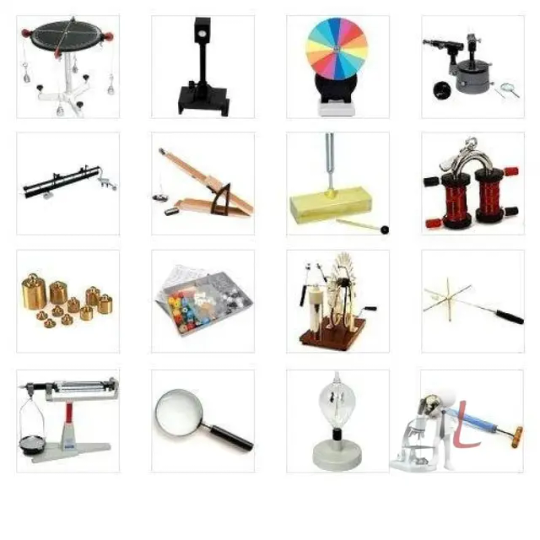
Physics Kit is a vital educational device provided by Physics Kit manufacturer and supplier in Africa. The Physics Kit is acquired in different tools and instruments that allow actual training to materialize those abstract concepts of Physics. These topics include motion, electricity, magnetism, and optics, and they clearly help an individual to learn how theory is applied in real-world situations. The items of Physics Kits are all directed toward the fundamental principles of physics that can facilitate understanding in all ways. Thus, they help to improve STEM education in African schools and institutions. In this blog, we mentioned the essential items that are inside of a physics kit.
Items in a Physics Kit
Physics kits have been designed for students, these tend to direct the students' endeavors to experience and explore the core scientific aspects by carrying out experiments.
Spring Balance
The force is measured in newtons through a spring balance, which lies right at the vision of gravitational force. This further causes students to understand the relationship between force, and mass could enable them to do more on concepts that talk about tension, weight, and Hooke's Law. This permits practice and experimentation, to understand forces acting on objects.
Inclined Plane
The inclined planes have another classic piece of equipment that helps in the understanding of the angles and forces on any object. Many things can be demonstrated about forces as they change due to friction and normal force by placing the Inclined Plane at different angles. A device like this demonstrates to students the principles behind the mechanical advantages used in simple machines.
Pendulum Setup
This setup consists of a bob suspended from a string or rod, leading students to oscillatory motions. Altering the length of the string or the mass of the bob allows students to study the periodic motion, gravitation acceleration, and factors that affect oscillation. The setup could be used to study concepts like time period and frequency.
Multimeter
The multimeter is a versatile tool, and its electric properties can measure voltages, currents, and resistances. For the understanding of Ohm's Law, how a circuit works, and how all these electrical properties come together, a multimeter is very essential for students. It usually allows students to practically explore the behavior of an electricity component.
Optical Lens Set
An optical lens set will typically have convex and concave lenses, which are essential in illustrating how light refracts and how images are formed. Students actually perform experiments through the use of such lenses. They learn about things such as how light travels through materials, the magnification of lenses, and their focal distance. As a result, they will understand the basic principles and principles of optics and vision.
Magnet and Iron Filings
Magnets and iron clips are used to identify the field patterns of the magnet. There are different possible shapes of magnets and changes that can be seen in arrangements of iron filings. It is an interactive demonstration to help the student to see and feel the basic meaning of magnetism.
Electric Circuit Components
Electric circuit components consist of resistors, switches, batteries, and wires used to build and analyze elementary electrical circuits. The inclusion of those devices makes it effective to study topics such as current flow, resistance, voltage, and power. Students can also examine more about series and parallel circuits by assembling circuits. Electric circuits are crucial in appreciating fundamental electrical technology concepts.
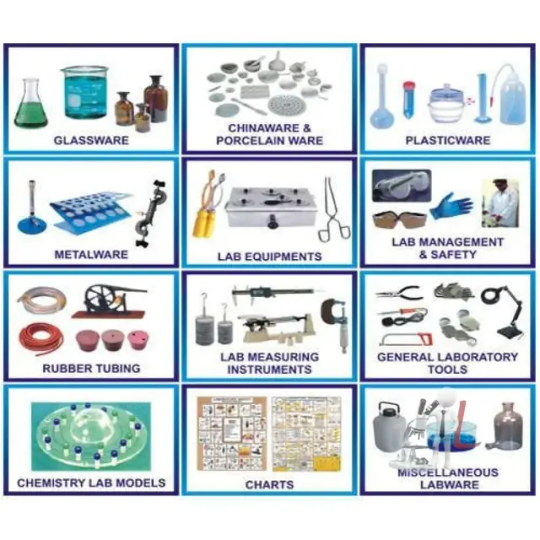
Benefits of a Physics Kit
According to a research study performed by the Journal of Science Education and Technology, students who are provided with hands-on learning tools such as physics kits show significant improvement in conceptual understanding, with an increased percentage of student performance 30% higher on the use of kits in comparison to traditional textbook knowledge. Research emphasizes that practical experience enhances cognitive development, promotes problem-solving, and enhances communication skills. Physics kits also help students to remember information better and develop a genuine interest in the subject.
Why Choose Didactic Africa?
Didactic Africa is a leading physics kit manufacturer and supplier in Africa. Didactic Africa creates some of the most outstanding, enduring, and much-valued physics kits which are extremely adaptable to various teaching needs. It is accessible to the school system and provides schools with end-to-end solutions suitable for all pupils. Those going for Didactic Africa will be gaining an edge and a specially curated kit that makes hands-on learning easier and ignites student interest in it. Furthermore, it offers excellent customer service and support for Didactic Africa in assuring that the schools have everything necessary for maximizing the use of their physics kit.
Conclusion
Physics kits are one of the most valued educational tools for learning about physical concepts and developing one's understanding through experimental work. Physics kits provide students with first-hand learning items such as spring balances, pendulum experiments, and multimeters in a process that makes theoretical physics come to life. These research works show great improvement in students in terms of understanding and levels of interest in using such kits. Didactic Africa, as the best physics kit manufacturer and supplier in Africa, provides an excellent solution to schools with high-quality physics kits specially designed for schools in Africa. If one chooses Didactic Africa as the source of their physics kits, they are believed to gain access to a system of quality in physics kits and learn to build value in the subject, promote exercises in critical thinking, and apply problem-solving and STEM Education.
#physics kit manufacturer and supplier in africa#physics kit manufacturer and supplier#physics kit manufacturer
1 note
·
View note
Text
Experiment: Determination of Focal Length of a) Convex Lens b) Concave Mirror by Obtaining the Image of a Distant Object
Focal length of a convex lens & Concave Mirror: a). Focal length of a convex lens: Objective: To determine the focal length of a convex lens using a distant object (like a sun, tree or tall faraway building). Principle: A convex lens converges parallel rays of light (from a distant object) to a point called principal focus (F). The distance between the optic centre (O) of the lens and the…
#Board exam Prep#CBSE Class 10 Physics#Concave mirror#Convex lens#Distant Object method#Focal length#Light Reflection Refraction#Observation table#Optics experiment#PHYSICS PRACTICAL#Practical Exam#Viv voce questions
0 notes
Text
Optical Spherical Mirror
Spherical mirrors are mirrors whose reflecting surface is a portion of a sphere. Depending on the convexity or concavity of the reflecting surface, spherical mirrors are classified into convex mirrors and concave mirrors. When the inner side of the sphere serves as the reflecting surface, it is called a concave mirror; conversely, when the outer side of the sphere serves as the reflecting surface, it is called a convex mirror.
Spherical mirrors have wide-ranging applications in various fields. For example, microscopes utilize lenses to magnify and focus light for observing tiny objects; telescopes use lenses to magnify distant objects, enabling clear observation; camera lenses focus light to capture images on film or sensors; in artificial vision, lenses simulate the visual function of human eyes, aiding robots or other automated devices in perceiving the environment; lenses in laser systems are used to focus and shape laser beams for various applications.
Company Name:Changzhou Haolilai Photo-Electricity Scientific and Technical Co., Ltd. Web:https://www.cnhll.com/product/optical-spherical-mirror/ ADD:No.10 wangcai road, Luoxi town,Xinbei district, Changzhou,Jiangsu, China. Phone:86-519-83200018 Email:[email protected] Profile:As a High-Tech enterprise in Jiangsu province, HLL boasts a talented team with intensive experience and professional technology. HLL has established Jiangsu Precision Optical Lens Engineering Technology Center and Jiangsu Enterprise Technology Research Center and obtained multiple patents for inventions, multiple utility model patents and multiple Jiangsu High New Tech Products.
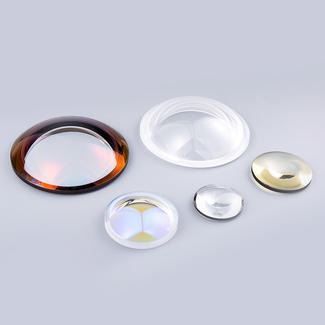
0 notes
Video
youtube
CM6612 H1 LED Fog Lights
Description
CM6612 H1 LED Fog Lights
1. Increase Night Visibility: High-quality CM6612 H1 LED bulbs, each 48W, with a color temperature of 6000K, equipped with 12 advanced LED chips to achieve 360° illumination. The convex lens projects the light farther and forms a focused beam—no dark spots, no shadows—providing wider and clearer visibility to ensure safe and comfortable driving.
2. Safe Beam Pattern: Applied the same beam design as the original high or low forward light bulbs, the ultra-thin LED chip interval provides a wider angle and farther range of light on the road. No blinding or dazzling oncoming drivers, ensuring a safe driving experience.
3. No Additional Adapter Required: NO POLARITY, 1:1 mini design same as halogen bulbs. No worries about the narrow space of the housing and no need for extra adapter—real plug and play, directly fits into your socket.
4. Longer Life: Lifespan up to 50,000 hours: Made of aviation aluminum with excellent heat dissipation performance, the carefully designed heat pipe radiator design increases the heat dissipation rate and the turbine cooling fan ensures a lifespan of up to 50,000 hours, reducing the need for frequent replacement of bulbs.
5. Easy Installation:
Fits into your housing and factory sockets without any modification—just plug and play. CM6612 LED headlights match 99% of the vehicle models. If you don't know what type of light bulb your car is suitable for, please check your owner's manual or the part number on your original bulbs to confirm the bulb type, or search for "car bulb finder" to confirm the model.
CM6612 H1 LED
*.Power supply: 12 or 24VDC cannot be shared *.SMD3570: chip high-power 48W *.12 flip-chip :packages, stable lumen output using constant current IC. *.Efficient heat conduction.*.High lumen output up to 4700LM- white& 4300LM-Warm white.

4 notes
·
View notes
Text
Exploring the fascinating world of concave and convex lenses! Here's a glimpse of our students discovering image characteristics through a hands-on experiment. Learning by doing, one lens at a time! . . . #SristiGlobalSchool #bangloreschools #HandsOnLearning #ScienceExperiment #LearningThroughExperience #ConcaveAndConvex #YoungScientists
0 notes
Text
My Cleaning and Storage Technique
TLDR: Blue Dawn dish soap My cheaper and effective cleaning and storage solution. I had my cornea transplant in 2005. I have always had a good amount of protein build up on my lens throughout my day. Some days required a few removals and cleanings to stay comfortable. The most effective cleaning solution I found was the ESC Lobob. Many of the other cleaners I tried over the years didn't completely clean the lens and there were a couple of times I damaged my lense in my attempt to clean them (usually the damage was slight and over time) by using too much force. About 4 or 5 years ago (longer?) Lobob discontinued their ESC brand and the available bottles were selling for something like $50 a bottle online; 🖕. The peroxide solution wasn't great for me either. I needed an effective separate cleaner and I was running out of my ESC supply. I began experimenting....I found a solution. Blue Dawn dish soap works unbelievably well. The generic brand is trash and doesn't work, don't use it! I've been wearing Sclerals for close to 20 years and I'll offer my current cleaning and storage setup. Night: * Remove lense * Place the bowl of the lense (concave) up and add a few drops of Dawn * Gently rub until beginning to lather * Flip lense convex side up * Gently (in my case being right handed) rub right palm against left palm that is holding the lense. Add a bit a warm water, this works best if the soap froth isn't too dense. * Rinse * Add a small bed of Dawn in the bottom on the lens case. Over time this will prevent unnecessary micro scratches on the lens from coming into contact with the case. * Fill the case completely encasing the lens Morning: * Remove lense from case. * Repeat Night Steps 2 - 6 (minus adding any additional soap) * Once 100% completely clean of soap coat the outside (convex) of the lense with a typical storage solution (I use Boston Advanced. Good viscosity). * Fill the inside (concave) of the lense with Boston Advanced. * While holding the lens filled with Boston Adv. Pour the solution on to your suction-cup (this helps lube the cup and prevent micro scratches). * Thoroughly rinse the outside and inside of your lense with your preservative free saline solution. * Apply lense to suction-cup and rinse with saline again. * Fill with preservative free saline and install. I've also incorporated Mega-3 eye drops throughout the day if needed (not always) which helps surprisingly well for dryness, slight discomfort, and/or blurry vision due to dryness/protein build-up. This technique works better for me than ESC ever did and is available at any local store. I've been doing this for years and have never had a problem. My eye doctors know about this. Obviously, I'm not a doctor or giving medical advice. But I do know what this struggle can be like. Even getting basic eye cleaning products can be a nightmare. If you ever feel sorry for yourself just remember, 100 years ago we'd all be walking around with a red tipped cane. Godspeed submitted by /u/Thundergun4 [link] [comments] https://www.reddit.com/r/Keratoconus/comments/1d3cww6/my_cleaning_and_storage_technique/?utm_source=dlvr.it&utm_medium=tumblr
0 notes